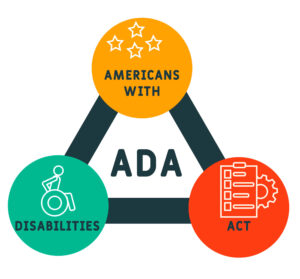7 Steps to Web ADA Compliance and Accessibility
What do you mean I have to modernize my website? Does my website need to be ADA-compliant? Does everybody’s website need to be ADA-compliant? These are all great questions, and this topic has become hot lately because website inaccessibility lawsuits
are at an all-time high.
Website modernization, as it pertains to the Americans with Disabilities Act, involves ensuring that a website is accessible to individuals with disabilities. ADA compliance for websites refers to the practice of making websites accessible to people with disabilities, including those who are visually impaired, hearing impaired, or have physical or cognitive disabilities.
What Does the ADA Require of Websites?
The ADA requires that websites be accessible to people with disabilities but does not provide specific technical standards or guidelines for website accessibility. Instead, the Web Content Accessibility Guidelines (WCAG) developed by the World Wide Web Consortium (W3C) are commonly used as a standard for website accessibility. These guidelines provide a set of technical standards for website accessibility, including recommendations for things like text alternatives for images and videos, clear and consistent navigation, and ensuring that websites can be accessed using assistive technologies like screen readers.
Whether every website needs to be
ADA compliant is generally “Yes.” The ADA applies to all businesses and organizations considered places of public accommodation, which has been interpreted by the courts to include websites. Failure to make a website accessible to people with disabilities could result in legal action under the ADA, including
lawsuits and potential fines. However, what is required to make a website accessible can vary depending on factors like the size and nature of the business or organization, the specific disabilities that need to be accommodated, and the resources available to the business or organization.
Government agencies should work toward better website accessibility to accommodate their constituents. The Commonwealth of Virginia, for example, is doing just that with its
website modernization program to improve Virginia’s agency websites. We are proud to provide remediation support as part of that initiative.
Seven Steps to Make Your Website More ADA Compliant
What steps should you take to make your public-facing website accessible, according to ADA? Well, we could fill quite a few pages with the entire list. However, below are just seven suggested steps that you can take to make your public-facing website accessible according to the ADA:
- Use proper markup and coding. Ensure that your website is built using proper HTML and CSS coding. This makes it easier for assistive technologies to read and navigate your website.
- Provide alternative text for images. All images should include alternative text, which screen readers can read. This allows visually impaired users to understand the purpose of pictures on your website.
- Ensure clear and consistent navigation. Your website should have a clear and consistent navigation structure that is easy to use. Users should be able to quickly find the information they need, regardless of their abilities.
- Use descriptive and concise headings. Headings and subheadings should be descriptive and concise. This helps users with visual or cognitive impairments to navigate the website and understand the structure of the content.
- Ensure color contrast. Ensure that the colors used on your website have enough contrast so that they can be easily seen by users with low vision. This also makes the website more accessible to users who are colorblind.
- Make videos and audio content accessible. Provide captions and transcripts for all videos and audio content on your website. This will help users with hearing impairments understand the content.
- Test your website for accessibility. Use accessibility tools to ensure that they meet accessibility standards. The Web Content Accessibility Guidelines (WCAG) provide technical standards for website accessibility that can be used as a guide.
By following these steps, you can ensure that your website is accessible to users with disabilities and in compliance with the ADA. AIS Network is currently involved in the Commonwealth of Virginia’s website modernization program, and we’d like to share what we know with you, too.
Contact us now to learn how making your website more accessible to people with disabilities can prevent lawsuits.


